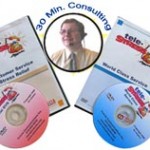Editor’s note: This is an update of the Sustainability and Green Procurement online course soon to be available. In concert with the American Purchasing Society, I am developing a green purchasing course that will have far more extensive material available in online, print, and portable digital media. We will update quarterly so companies can build on successes. We will offer discounts to those who sign up early so send me an email stating your interest and I’ll respond with particulars.
But there is more to this story as cited by Scot Horst, Senior VP of the green-building rating system Leadership in Energy and Environmental Design or LEED, a unit of the US Green Building Council, “If fly ash is a hazardous waste and it becomes part of a concrete wall, is the wall a hazardous material?”
Is fly ash hazardous?
Use of fly ash preserves raw material and reduces GHG. Even more worrisome, the EPA has also designated CO2 as an environmental pollutant, a scientific view that is patently absurd. The waste product of CO2 exhaled by the animal kingdom (fauna) is the life breath of the plant kingdom (flora) which consumes it by photosynthesis to give off its oxygen waste product, the life breath of the fauna. Such ill considered pronouncements by the EPA add fuel to the fires raging between good vs. junk science.
The EPA was silent on the matter of what would be done with the fly ash were it not consumed in concrete. Would it be sent to landfills, treated at great expense, or other solutions found? Sometimes these decisions are not thoroughly deliberated.
Some major players weigh in
The American Concrete Institute (ACI) contends that the use of fly ash in concrete is environmentally responsible because it typically replaces 15% to 25% of the cement content in concrete. Substitution of fly ash reduces the GHG generated in cement production. ACI states that in 2007, there was a 15-million-ton reduction of CO2production attributable to the substitution of fly ash for Portland cement.
According to a story in Engineering News Record (ENR), a publication of McGraw-Hill , the proposed rule would complicate production and disposal of concrete. The story asks, “Would a hazardous-waste designation for fly ash would make it the “new asbestos” or “new lead paint”. Other questions arise sch as the handling practices of fly ash and fly ash laden concrete “during production and casting as well as during the demolition and disposal of concrete structures.”
The American Coal Ash Association (ACAA) points out that In 2008 in the US alone, almost 16 million tons of fly ash were used in cement and concrete production. The use of fly ash instead of energy intensive Portland cement avoided 12 million tons of GHG emissions. Further, some experts contend that the fly ash is contained and encased by the concrete making the matter moot.
More to come
A predictable result of politically concocted decisions is that they defeat the very purpose they intend to achieve. That is, another argument is added to the confusion of what practices are Sustainable and why. Since the demand for concrete increases as the population grows, does it not make obvious sense to choose fly ash as the Sustainable solution. The matter of Sustainability of fly ash remains an open question.
To see previous posts on the topic of Sustainable Purchasing see
What is Green Procurement and is it Valuable to the Purchasing Profession













